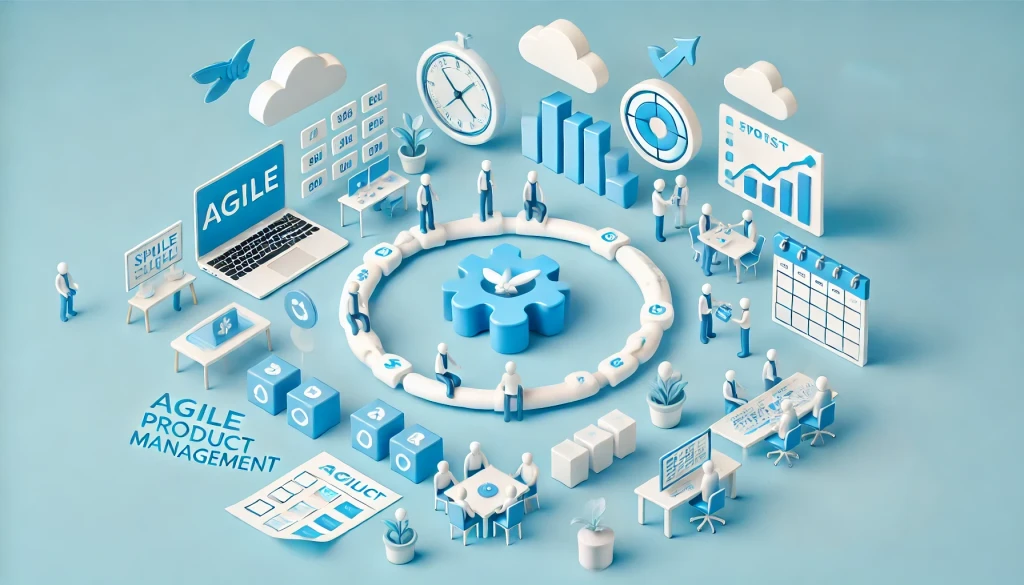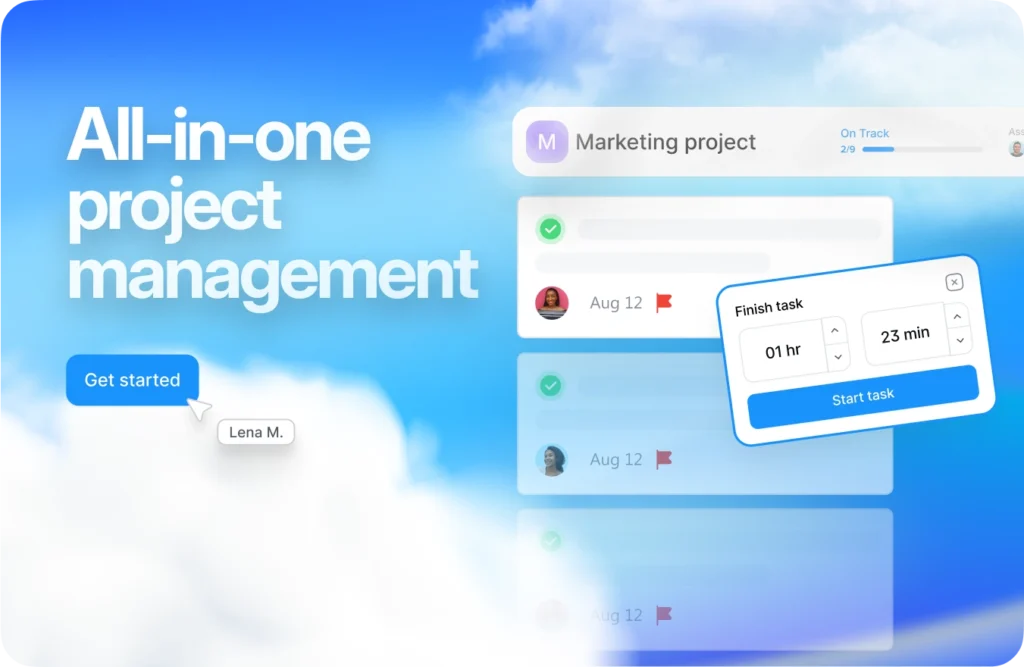What is Agile Product Management?

Agile Product Management is a dynamic and iterative approach to developing products that emphasizes flexibility, collaboration, and customer feedback. In today’s rapidly changing market, businesses must be able to adapt quickly to new information and changing customer needs.
Agile methodology enables this adaptability by breaking down the product development process into smaller, manageable chunks called iterations or sprints. Each sprint typically lasts between one to four weeks and focuses on delivering a potentially shippable product increment. This method stands in contrast to traditional product management, which often follows a linear, sequential development process.
Key Principles of Agile Methodology
Agile product management is rooted in the principles of the Agile Manifesto, which promotes:
- Individuals and Interactions over processes and tools.
- Working Software over comprehensive documentation.
- Customer Collaboration over contract negotiation.
- Responding to Change over following a plan.
These principles ensure that teams focus on delivering real value to customers and can pivot quickly when priorities change.

Benefits of Agile Product Management
- Flexibility and Adaptability: Agile allows teams to respond to changes and new information quickly. This adaptability is crucial in today’s fast-paced business environment where market conditions and customer preferences can shift rapidly.
- Improved Customer Satisfaction: By involving customers in the development process and delivering small, incremental updates, businesses can ensure that the final product meets customer needs more effectively.
- Higher Product Quality: Frequent testing and iteration help identify and resolve issues early in the development process, resulting in higher quality products.
- Enhanced Team Collaboration: Agile promotes a collaborative work environment where cross-functional teams work together closely, fostering better communication and cooperation.

Agile Project Management Tools
Utilizing the right tools is essential for effective agile project management. Some popular tools include:
Jira: A comprehensive tool for managing agile projects, allowing teams to plan, track, and release software.
Trello: A flexible and visual project management tool that supports kanban boards and is excellent for managing tasks and workflows.
Asana: A robust project management tool that helps teams organize their work, from daily tasks to strategic initiatives.
Peerbie: An innovative project management tool designed to enhance team collaboration and productivity by integrating various agile methodologies and providing a user-friendly interface for task management and communication.
These tools facilitate better planning, tracking, and collaboration, making it easier for teams to stay aligned and productive.

Product Development
Agile methodology enables a more efficient product development process by breaking projects into smaller, manageable tasks and promoting continuous feedback and improvement. This iterative approach ensures that products evolve to meet customer needs and market demands. Implementing agile practices in product development can lead to quicker time-to-market, higher-quality products, and better alignment with customer expectations.
Implementing Agile in Your Organization
Implementing agile methodology in your organization involves several steps:
- Educate and Train Your Team: Ensure that your team understands the principles and practices of agile. This might involve training sessions, workshops, and ongoing education.
- Choose the Right Framework: There are various agile frameworks, such as Scrum, Kanban, and Lean. Select the one that best fits your team’s needs and project requirements.
- Start Small: Begin by implementing agile practices in a small project or team. This allows you to test and refine your approach before scaling it across the organization.
- Foster a Collaborative Culture: Agile thrives in a culture of collaboration and open communication. Encourage your team to work closely together and provide regular feedback.
- Use Agile Tools: Invest in agile project management tools to help your team plan, track, and manage their work effectively.
Agile Methodology vs. Traditional Project Management
Agile methodology differs significantly from traditional project management approaches like Waterfall. In Waterfall, projects move through a linear sequence of phases: requirements, design, implementation, verification, and maintenance. This approach can be rigid and slow to adapt to changes. In contrast, agile emphasizes iterative progress, flexibility, and continuous improvement.
Advantages of Agile:
Continuous Delivery: Agile teams deliver small, incremental updates regularly, allowing for continuous improvement and adaptation.
Customer Feedback: Frequent customer feedback ensures that the product meets user needs and expectations.
Risk Management: Regular testing and iterations help identify and mitigate risks early.
Advantages of Waterfall:
Structured Approach: Waterfall’s structured approach can be beneficial for projects with well-defined requirements and minimal changes.
Clear Documentation: Comprehensive documentation in Waterfall provides a clear record of project requirements, design, and progress.
Agile and AI Project Management
The integration of artificial intelligence (AI) in project management is transforming how agile teams operate. AI can enhance agile product management by:
• Automating Routine Tasks: AI tools can automate repetitive tasks, freeing up team members to focus on more strategic work.
• Predictive Analytics: AI-powered analytics can predict project risks and provide insights to help teams make informed decisions.
• Improved Resource Allocation: AI can analyze data to optimize resource allocation and ensure that teams are working efficiently.
Extending Agile to B2B and B2C Markets
Agile methodology can be effectively applied in both B2B (business-to-business) and B2C (business-to-consumer) markets. In B2B, agile helps in managing complex customer requirements and long sales cycles, while in B2C, it allows for rapid adaptation to consumer trends and feedback. For instance, using agile frameworks like Kanban and Scrum, companies can continuously refine their product offerings to meet the evolving needs of their target markets.
Leveraging Agile for Improved Work Performance and Productivity
Implementing agile practices can significantly improve work performance and productivity. By fostering a collaborative environment, encouraging regular feedback, and promoting continuous improvement, teams can work more efficiently and effectively. Utilizing tools like Peerbie, Jira, Trello, and Asana can further enhance productivity by streamlining task management and project tracking.
Agile product management offers a flexible, customer-focused approach to product development that can significantly improve efficiency, quality, and customer satisfaction. By adopting agile methodologies and leveraging the right tools, organizations can stay competitive and responsive in today’s dynamic market environment. As technology continues to evolve, integrating AI into agile practices will further enhance the capabilities and effectiveness of agile teams, paving the way for even more innovative and successful product development.
Implementing agile methodology requires commitment and a cultural shift towards collaboration and continuous improvement. However, the benefits it brings make it a worthwhile investment for any organization looking to stay ahead in the competitive landscape. Whether you are managing a small team or a large enterprise, embracing agile product management can drive better outcomes and more satisfied customers.
By leveraging the right tools, frameworks, and AI enhancements, organizations can create a robust and agile work environment that not only improves productivity at work but also ensures that products are delivered on time and meet customer expectations. Embracing agile practices can lead to a significant competitive advantage in today’s fast-paced business world.

